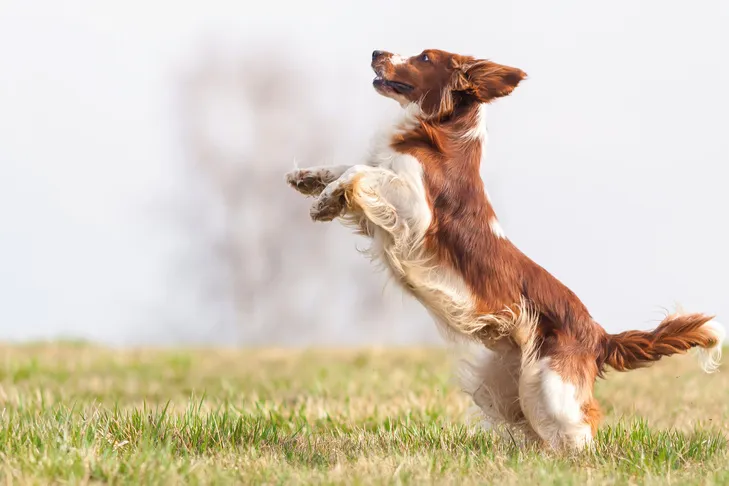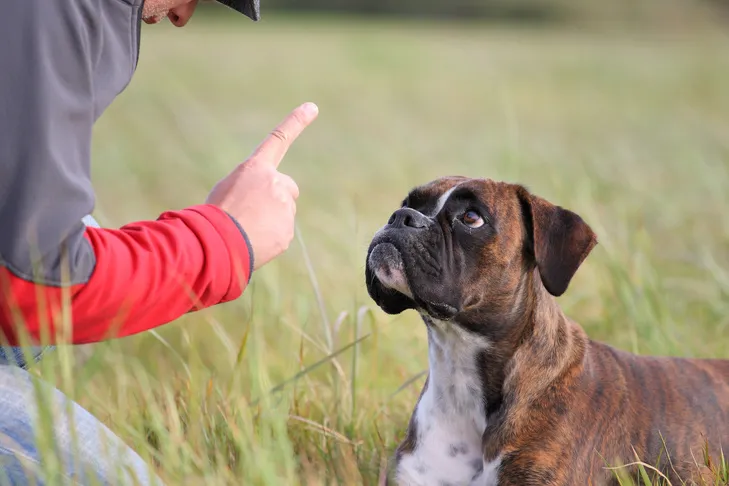Jumping up to greet is one of the most common dog behavior issues owners face. Whether it’s a large breed knocking people over or a small one leaving muddy paw prints, this habit can be frustrating and unsafe, especially around children or seniors. Your dog simply wants face-to-face attention, but teaching them polite greetings like keeping four paws on the floor makes interactions safer and more enjoyable. For more on curbing excited behaviors, check out how do you get your dog to stop jumping.
The key is consistency: reward calm behavior and ignore jumping entirely. This approach uses positive reinforcement to replace the unwanted action with an incompatible one, like sitting or standing still. With these proven strategies from experienced dog trainers, you’ll soon have a well-mannered greeter.
1. Greet Only When All Four Paws Are on the Floor
Teach your dog a clear greeting rule, such as keeping front paws down, sitting, or lying down. They can’t jump while doing these, making it an effective alternative. Only offer attention, praise, or pets when they comply—never when jumping. Consistency is crucial; avoid allowing jumps in casual clothes but not formal ones, as this confuses your dog.
2. Reward Immediately When Paws Touch the Floor
Dogs thrive on operant conditioning, repeating actions that earn rewards like your attention. As soon as their front feet hit the floor, provide enthusiastic praise and petting right away. Delaying reinforces impatience, so greet promptly even if you’re unloading bags. This builds the association quickly.
3. Withdraw Attention Completely During Jumps
To extinguish jumping, eliminate all rewards. Turn your back or step away calmly when they leap, denying eye contact or touch. The moment they settle with four paws down, turn back and reward generously. This on-off switch teaches them control over your response.
 Welsh Springer Spaniel jumping up outdoors.
Welsh Springer Spaniel jumping up outdoors.
Practice in low-distraction settings first, then progress to real arrivals. Scattering treats on the floor upon entry prevents jumps altogether—dogs can’t sniff and leap simultaneously. Phase out treats as they master “four on the floor.”
4. Set Your Dog Up for Success from the Start
Trial-and-error learning frustrates both of you, so prompt the desired behavior. Cue a sit as you enter or toss treats to encourage ground focus. For ongoing management, especially with puppies, learn how to stop puppies from jumping up on everyone.
5. Always Reinforce Proper Greetings
Even after repeated jumps, reward the first calm moment without hesitation. Withholding praise due to frustration undermines consistency and slows progress. Your steady response accelerates learning.
6. Avoid Grabbing, Pushing, or Physical Corrections
Any touch, even negative, counts as attention and reinforces jumping. Pushing paws away or holding them often escalates into play for energetic dogs. Instead, use withdrawal to de-escalate naturally.
 American Hairless Terrier jumping up on the leg of its owner outdoors.
American Hairless Terrier jumping up on the leg of its owner outdoors.
7. Skip the Knee Block Method
Raising your knee might seem intuitive, but it risks injury, erodes trust, and mimics rough play. Dogs read it as punishment for innocent excitement, potentially harming your bond and recall reliability. Stick to positive ignore-and-reward techniques.
To build self-control alongside greetings, teach foundational skills like how to get your puppy to stay.
8. Keep Initial Greetings Calm and Low-Key
High energy fuels jumping, so model relaxation. Use quiet tones and subdued praise initially; dogs mirror your emotions. Gradually amp up excitement as they succeed.
9. Manage Access to Prevent Guest Jumps
Family and visitors unwittingly reinforce jumping, so leash, crate, or gate your dog during arrivals. Direct them to a “place” like a mat. For crate training support, see my dog gets out of his crate.
 Boxer laying down outdoors being trained by a man.
Boxer laying down outdoors being trained by a man.
10. Instruct Others to Follow Your Rules
Politely guide guests: ignore until you signal all paws down. Use distractions like “watch me” cues or toys with strangers. Master family greetings first before public practice.
Mastering polite greetings transforms chaotic arrivals into joyful routines. By consistently rewarding calm behavior and withdrawing attention from jumps, your dog learns quickly without force. Patience pays off—soon they’ll greet reliably. For personalized training help at Dog Care Story, contact our experts today.
References
- American Kennel Club (AKC) GoodDog! Helpline resources on dog training.
- AKC expert advice on positive reinforcement and behavior modification.
